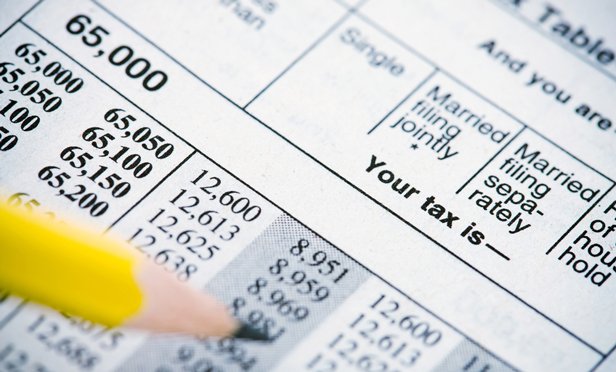 (Photo: Shutterstock)
(Photo: Shutterstock)This is one of the most important years for tax refunds. With tapped savings, increased debt and approximately 20 million people on some form of unemployment assistance, an increasing number of Americans are having difficulty paying for everyday expenses. Tax refunds and claims on missed stimulus checks may be a necessity. According to a 2020 survey, 68% of Americans expecting a tax refund believe that their financial well-being will depend on them. Last year, 50% of Americans planned to put their tax refunds in savings, 34% to pay down debt, and 24% towards everyday expenses. However, this was before the pandemic hit.
The world has changed and it’s more important than ever for employers to support their employees with financial guidance. As a result of the pandemic, employers have started to recognize the impact of financial stress on their bottom line – employees are less productive and more likely to seek new employment and delay retirement. Now, more so than ever before, employers will see a return on a financial wellness investment.
Let’s take a look at a hypothetical situation with employee Sally. Sally received a $2,500 direct deposit from the IRS. What should she do with this tax refund? On average, Americans received a tax return of $2,549 for the 2019 tax year, which is a 11.2% decrease from 2018.
Moreover, as a result of the CARES Act, Americans will also have the option to claim a stimulus check if they didn’t previously receive it.
As an employer, any amount of support you offer employees can be meaningful, especially during the time when employees like Sally are making a financial decision.
With a tax refund, for example, Sally is now paying attention to her money, giving you, as her employer, the perfect opportunity to make a difference in her life.
General rule
Sally has six options to use her refund. In general, she should follow the 70/20/10 rule. First, spend 10% now. It’s nearly impossible to get a big check and not have some fun.
Next, put 70% of the refund towards long term financial stability, following the steps below. Lastly, she can spend the final 20% as a reward to herself when she achieves her next financial goal. It is a balanced approach to help Sally make progress, while also living today.
How to use tax refunds
1. Put it towards your retirement plan.
Sally could invest in her future now by contributing her refund to an Individual Retirement Account (IRA). This account, coupled with her employer’s retirement plan will help her set the foundation for long term financial stability.
According to the Federal Reserve, over 80% of middle or upper income families were in a retirement plan compared to less than 40% of families in the bottom half of income distribution in 2019. Encouraging Sally to contribute can improve those figures.
2. Pay down credit card debt.
Sally could use the refund to attack credit card debt. As of 2019, credit card debt was the most widely held type of debt in the US. The average credit card debt that American families hold is $6,270 with 45.4% of families carrying some sort of credit card debt. Of Americans whose financial situation has worsened since the pandemic, 45% say they have taken on debt as a direct result of the pandemic.
3. Build up your emergency fund.
Next, Sally could stash some of her refund into cash savings. Tucking away a moderate amount — even as little as $500 — can help alleviate the negative side-effects of unexpected expenses. If she already has an emergency fund, nice work! Now she can give herself an extra boost toward reaching that 3 to 6 months of living expenses recommendation.
Based on a March 2020 survey, 42% of respondents planned on spending stimulus checks to pay for groceries and other essential needs, which is an indication of how they will probably spend their tax refund. The next top selection was adding to or starting an emergency fund, at 16%.
4. Pay down your mortgage, rent or loans.
Whether Sally has a monthly mortgage or a hefty rent payment, she could give herself some breathing room by using her tax refund to pay it forward. Sally also might consider using it to reduce the outstanding principal on her car or student loans.
Mortgages, auto loans, and student loans have increased from 2019 to 2020. In 2019, 22% of American households owed student loan debt with the average balance of debt increasing by 10% to over $22,000.
5. Invest in your assets.
Sally could spend her tax refund on higher-priced, but necessary, repairs to her home or vehicle. She could get an estimate for that leaky roof or those new tires she’s needed for her ride to work. Maintenance is a great way to limit the chance of a future emergency.
6. Live your bucket list.
If Salles has already covered the list above, she has options. She could use websites like Travelzoo to score deeply discounted vacation packages or invest in new hardware that to use for work and pleasure, like that smart phone she has had her eye on. To find the best deals, we recommend doing research and price comparisons.
As an employer, you understand that it’s Sally’s choice on how to use her refund. At the same time, you have the power to provide unbiased support and resources to help her make an intentional, informed decision.
As you think about showing results with a proven financial wellness offering, ensuring that she has the knowledge to consistently make better choices over time is the most important.
 Alok Deshpande is the CEO & Co-Founder of SmartPath.
Alok Deshpande is the CEO & Co-Founder of SmartPath.
https://ift.tt/2MoldWz
Tidak ada komentar:
Posting Komentar